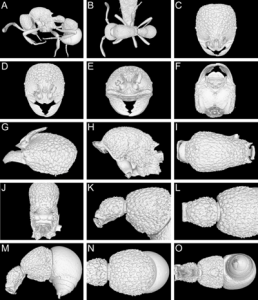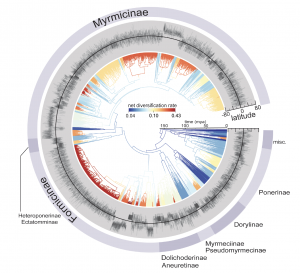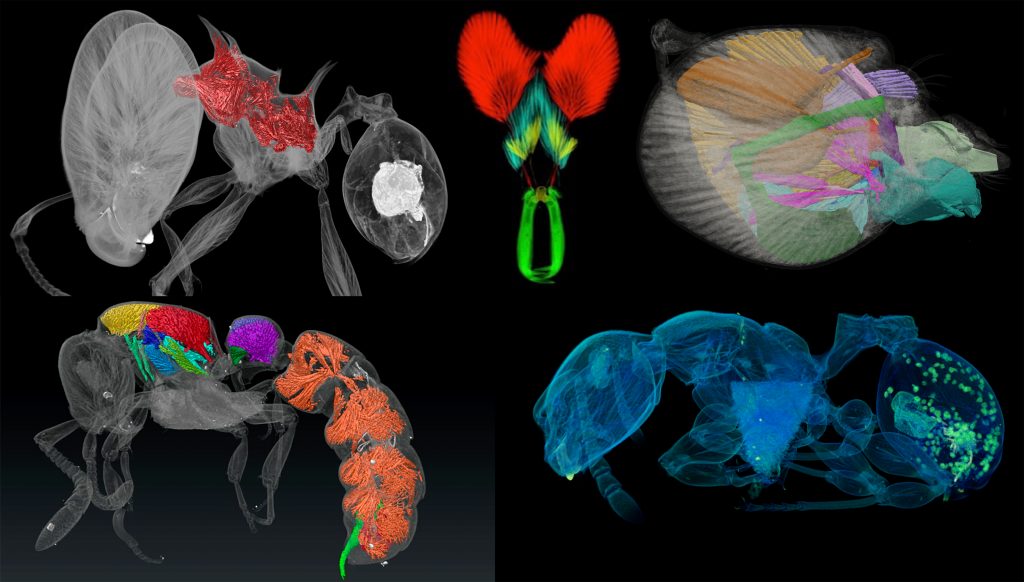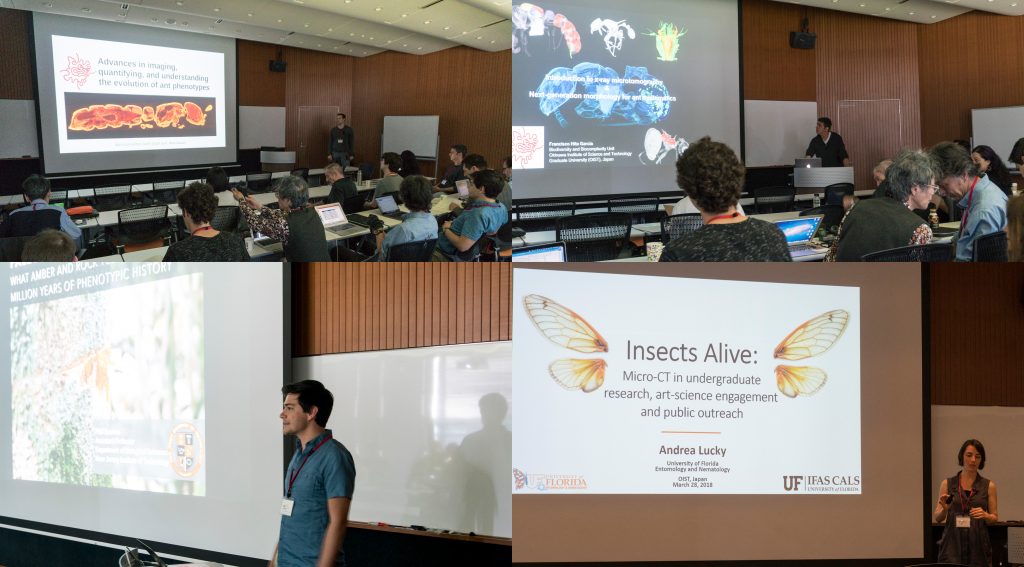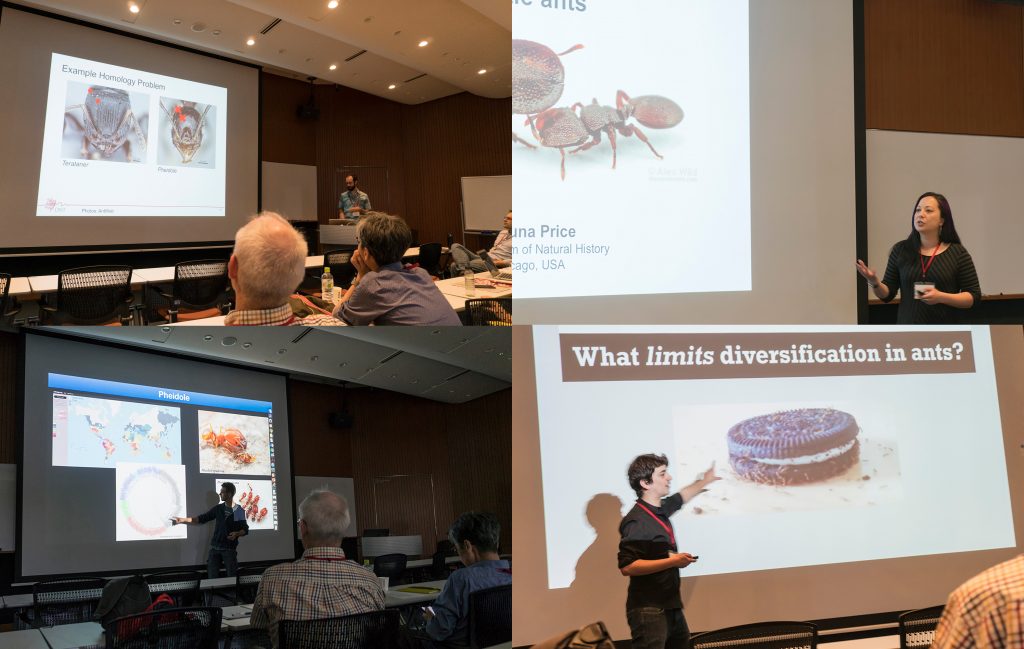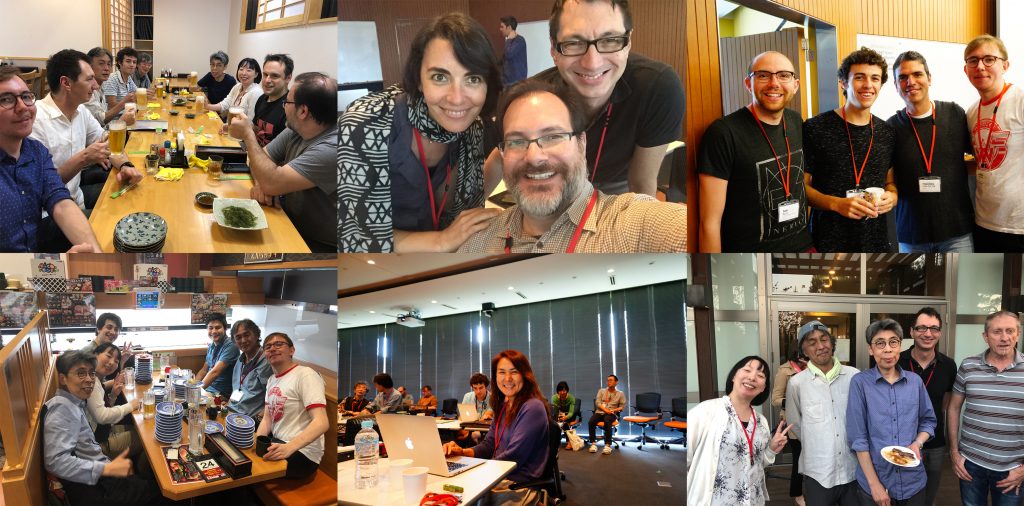We have a new paper out led by Adam Khalife and Christian Peeters in Frontiers of Zoology, about the very strange ants from the genus Melissotarsus. These African ants live exclusively in tunnels they excavate from living wood. They get their food from diaspadid scale insects they cultivate in their tunnels. Tunnelling through living wood is a pretty tough thing for ants to do, but Melissotarsus has some famously weird things about it that seems to help. The most obvious is their middle legs, which point upward instead of down like all other ants. It’s been known for a long time that due to these legs, they can’t walk on a 2D surface, they just fall over.
So, what’s going on here? In this study we used micro-ct along with other techniques to investigate adaptations to the skeletomuscular system, and the mandibles and legs in particular, that allow this ant to live this unusual lifestyle. Melissotarsus have unusually shaped heads, packed with muscle to close their powerful jaws. Their apodemes are expanded allowing for increased muscle fiber attachment. Turns out, their opener muscles also are enlarged, which is unusual for ants. This appears to help it chew through wood with its zinc-fortified cone-shaped mandibles. One needs both closing and opening power topush mandibles in and pull them out of wood.
And what about those legs? Ants hardly have trouble walking through tunnels on normal legs. Melissotarsus legs appear to be evolved to help brace the ant in the tunnel to apply force to the biting motion. If you are tunneling into a hard surface you need to push down on that surface, and if the ant is not anchored somewhere, the powerful mandibles would just push it backward. So we think that is why they have such odd legs, to anchor itself in the tunnel. Aside from their orientation, legs themselves are also highly modified, apparently for bracing.
There’s a lot more in the paper, and a lot more cool things about this ant that have evolved to allow it to exploit a unique (to ants) ecological niche that our team and others will be exploring in future papers.






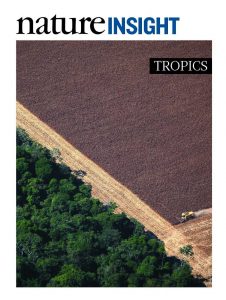 Out in
Out in 
